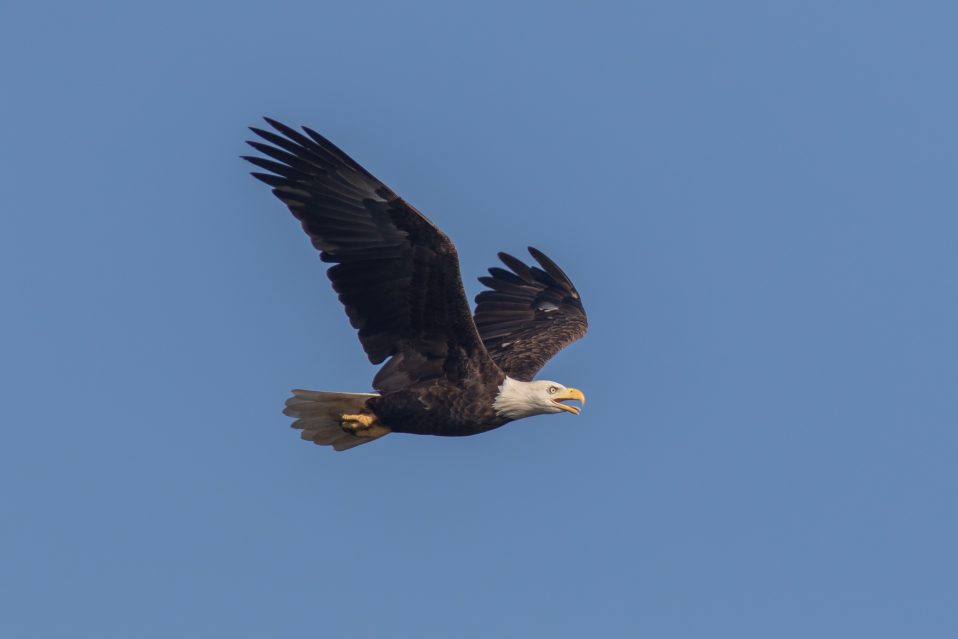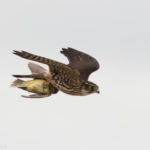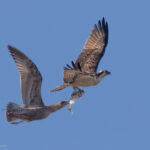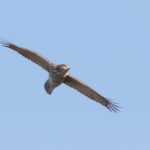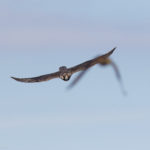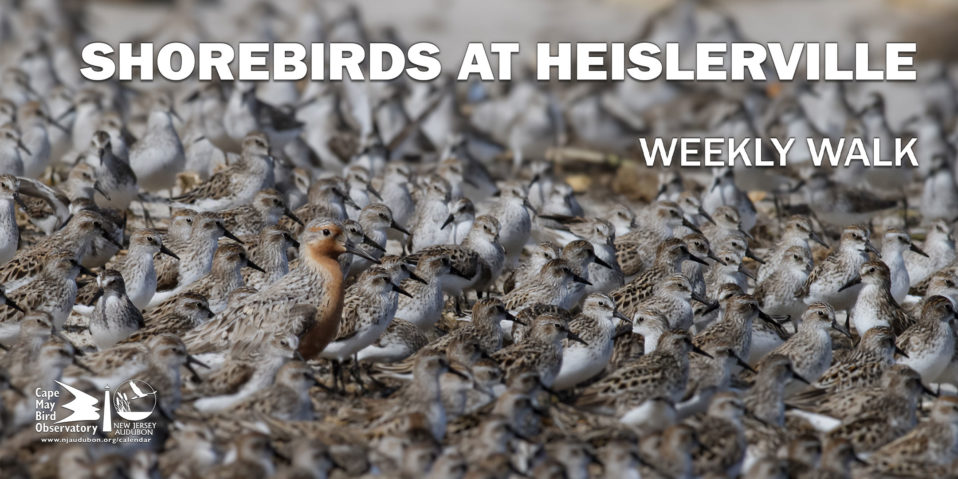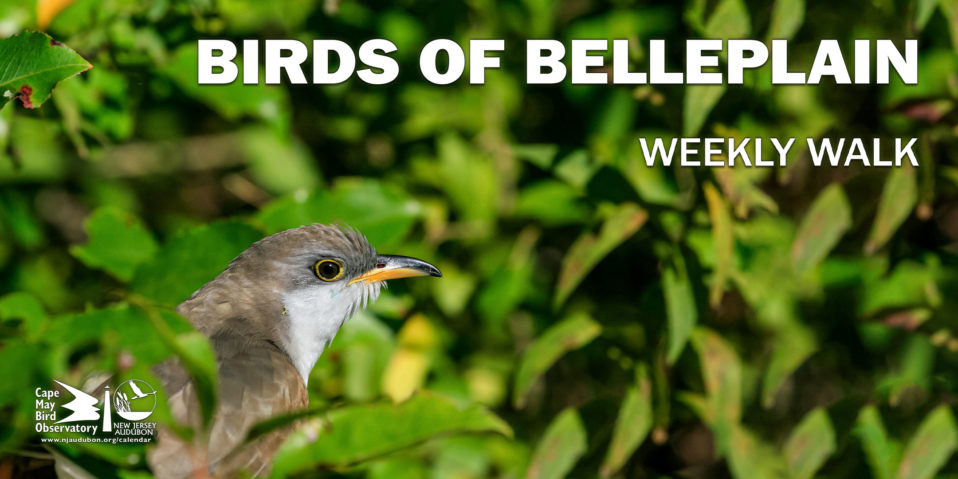Greetings! Jesse Amesbury here, back for my second stint as the Cape May Hawk Counter. I am really looking forward to getting back up on the platform again and soaking in all the migration Cape May has to offer. With a little good luck, maybe this season will produce many cold fronts and above average raptor totals (at least better than last season!!). Once again, Swarovski Optik is sponsoring the Cape May Hawkwatch, and we can’t thank them enough for their support.
September 1st, opening day, had a fall-like feel to it. Cool temps and a brisk wind. Hopefully an omen of things to come. This first migrating raptor of the season was an Osprey powering down the dunes.
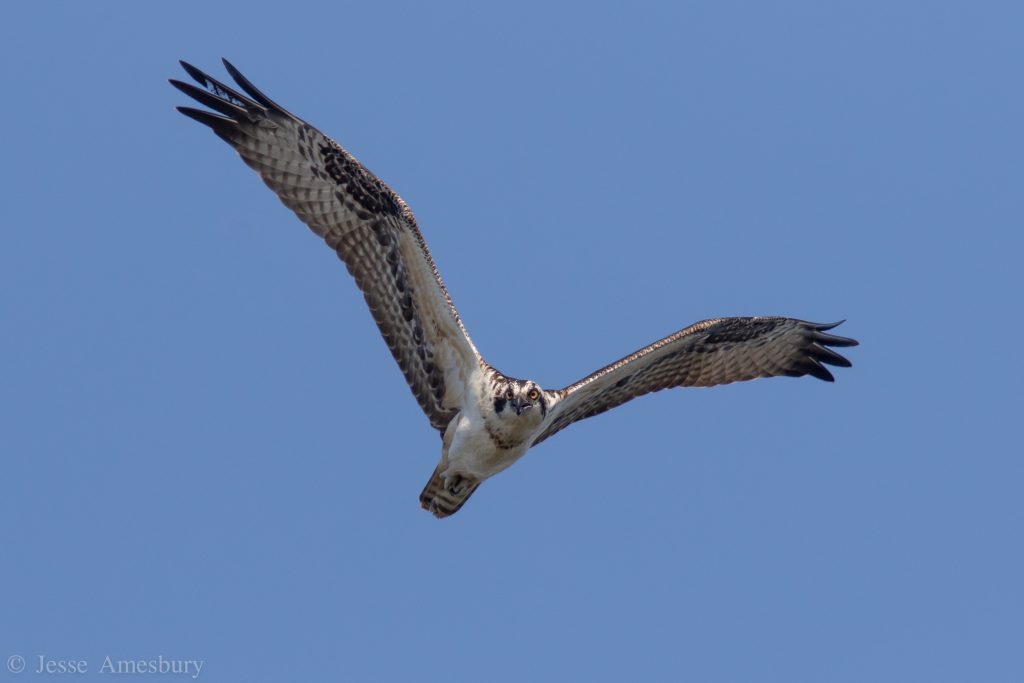
Ospreys are a ubiquitous sight along the New Jersey coastline during the summer months. We are in the heart of Osprey migration right now and are the most numerous migrant counted from the platform most days.
Unfortunately, summer-like conditions that often plague the beginning of the season took hold in the region and presented challenging hawkwatching conditions. Southerly and easterly winds, high dew points, and abundant sunshine not only made the migrants few and far between, but also allowed the migrants to take advantage of the strong thermals and soar to heights barely visible to the unaided eye. One bright spot occurred on September 5th, when a cold front cleared the region earlier the night before. The northerly winds ushered in a season high of 188 raptors. The flight was headlined by 138 Ospreys and 25 American Kestrels. One major highlight was watching a Peregrine Falcon attempt to snatch a migrating Eastern Red Bat out of midair! After multiple unsuccessful dives the Peregrine gave up and the bat got away.
Can’t forget about the non-raptor highlights either. September is peak migration for many songbird and shorebird species and that was evident on the hawkwatch platform too. A few of the rarities we observed were Yellow-headed Blackbird, American Avocet, American Golden Plover, White Ibis and Baird’s Sandpiper.
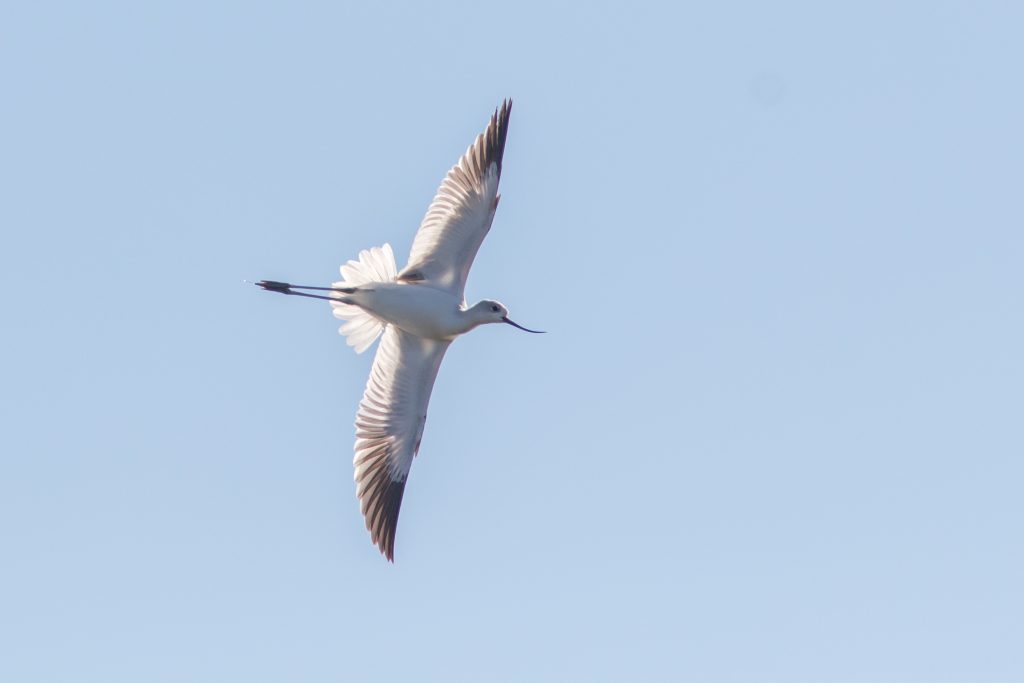
An American Avocet made multiple close passes in front of the platform looking for a suitable place to land. This elegant shorebird species is common just across the Delaware Bay, but is still a rarity in Cape May and definitely a sight for sore eyes.
As we enter the middle part of September numbers should begin to increase dramatically. Will we get a big Broad-winged Hawk flight? Time will tell. Come by and say hello!




